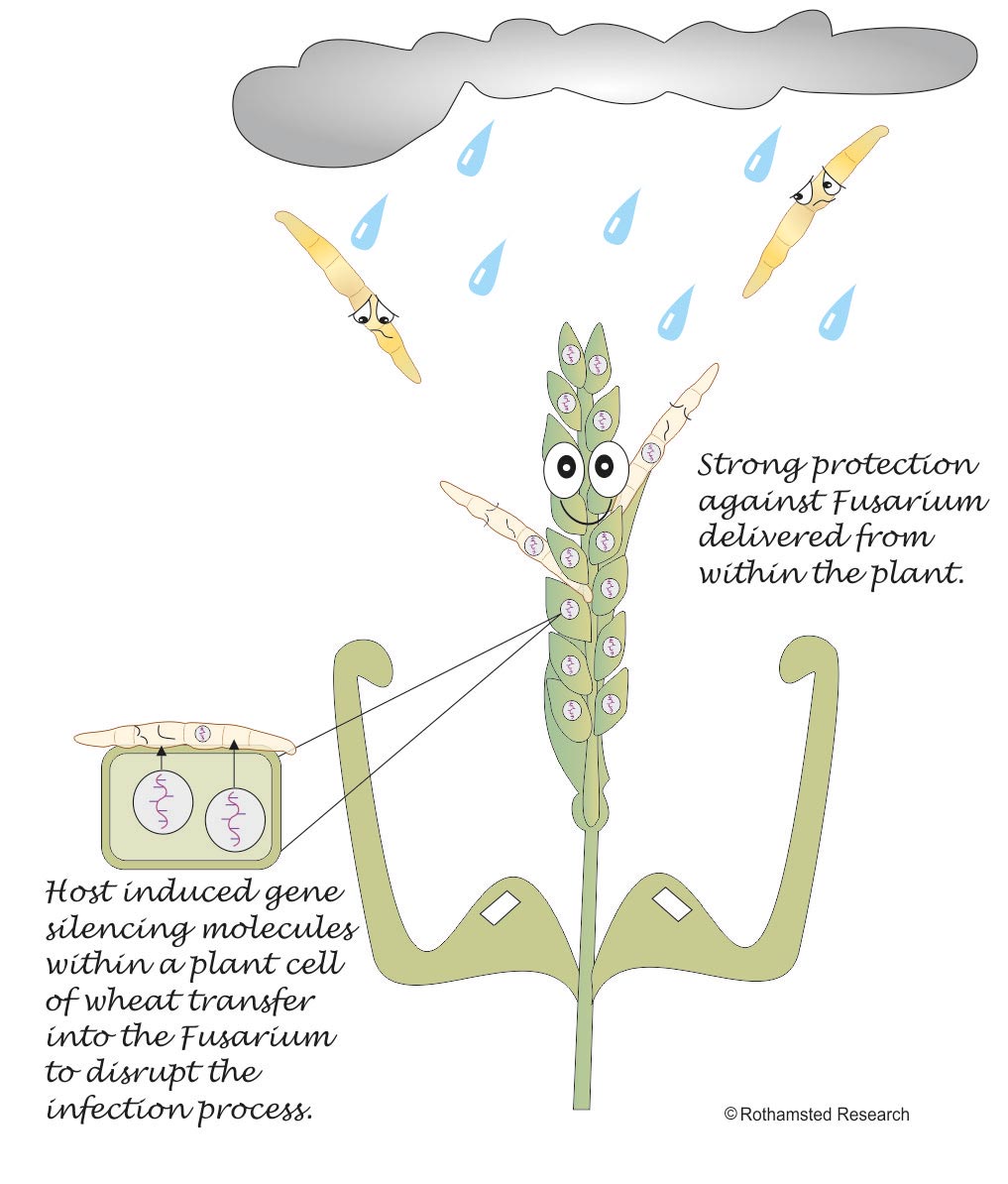The big picture: using wildflower strips for pest control
Fusarium Head blight (FHB) is a major disease in most small-grain cereal growing regions in the world threatening global food security. The disease is caused by several fungal species, with Fusarium graminearum usually being the dominant species. Currently, complete control of FHB using conventional methods (breeding, chemicals, cultural) is not possible and a new suite of flexible approaches to crop protection are urgently required. This joint project with Embrapa (Brazil) aims to identify Fusarium genes for intervention via RNA interference using a novel biotechnology approach called host induced gene silencing (HIGS).
Plants will be engineered to produce double stranded RNA directing targeted silencing of different Fusarium genes or their combinations, and this should minimise FHB disease development. Various silencing constructs are being tested for efficacy in transient assays, and two lead constructs have already been stably transformed into a commercial moderately FHB resistant Brazilian wheat cultivar. The most promising HIGS lines of wheat will be assessed in field trials in southern Brazil during 2018 and 2019. Other aspects of this project include investigating the mechanism underlying HIGS; sequencing the genomes of five Fusarium species causing FHB disease in Brazil; and developing Fusarium species-specific PCR-based detection assays to improve existing FHB disease risk forecasting models.
Fusarium head blight (FHB), caused the fungus Fusarium graminearum and related species, is one of the most serious and hazardous crop diseases worldwide. The main consequence of FHB is that fungal trichothecene mycotoxins, such as deoxynivalenol (DON), accumulate in the grain, presenting a health risk to humans, farmed animals and natural ecosystems. In Southern Brazil, the UK and elsewhere, severe FHB epidemic years occur in cereal crops at a minimum of every 4 or 5 years, when wet weather prevails during crop flowering. Current control strategies are inadequate and leave crops and the harvested grain at risk.
For the effective and sustainable control of FHB disease, a new multifaceted approach is required. Here we describe a recently funded bilateral UK-Brazil project in which we intend to take a novel whole fungal genome and disease risk modelling guided biotechnology approach (HIGS), in which we will engineer wheat plants to produce double stranded RNA molecules, which enter into the fungal cells early during plant infection and silence or switch off essential fungal genes. This should perturb the infection process and minimise disease establishment. We also intend to determine the plant and fungal mechanisms that control the HIGS phenomenon. Potentially, genome sequence guided HIGS could be developed to control multiple pathogens.
The following five research objectives will be pursued in this project:
This new approach should help to further optimise the construction, deployment and re-use of HIGS multi-gene cassette for the sustainable control of various plant diseases.


Molecular Plant Pathologist

Plant Pathologist; Aerobiologist

Data Scientist
Database containing all the Fusarium genes functionally tested via reverse genetics for their role in pathogen virulence and disease development